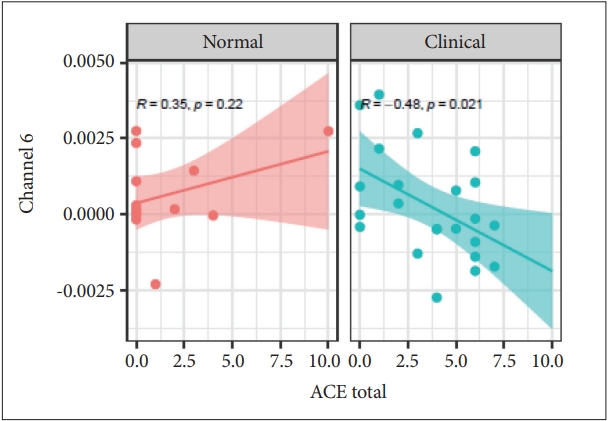1. Swannell SV, Martin GE, Page A, Hasking P, St John NJ. Prevalence of nonsuicidal self-injury in nonclinical samples: systematic review, meta-analysis and meta-regression. Suicide Life Threat Behav 2014;44:273-303.


2. Jarvi S, Jackson B, Swenson L, Crawford H. The impact of social contagion on non-suicidal self-injury: a review of the literature. Arch Suicide Res 2013;17:1-19.


4. Ando A, Reichl C, Scheu F, Bykova A, Parzer P, Resch F, et al. Regional grey matter volume reduction in adolescents engaging in non-suicidal self-injury. Psychiatry Res Neuroimaging 2018;280:48-55.


5. Chanen AM, Velakoulis D, Carison K, Gaunson K, Wood SJ, Yuen HP, et al. Orbitofrontal, amygdala and hippocampal volumes in teenagers with first-presentation borderline personality disorder. Psychiatry Res 2008;163:116-125.


6. Whittle S, Chanen AM, Fornito A, McGorry PD, Pantelis C, Y├╝cel M. Anterior cingulate volume in adolescents with first-presentation borderline personality disorder. Psychiatry Res 2009;172:155-160.


7. Takahashi T, Chanen AM, Wood SJ, Y├╝cel M, Tanino R, Suzuki M, et al. Insular cortex volume and impulsivity in teenagers with first-presentation borderline personality disorder. Prog Neuropsychopharmacol Biol Psychiatry 2009;33:1395-1400.


9. Groschwitz RC, Plener PL, Groen G, Bonenberger M, Abler B. Differential neural processing of social exclusion in adolescents with non-suicidal self-injury: an fMRI study. Psychiatry Res Neuroimaging 2016;255:43-49.


12. Sauder CL, Derbidge CM, Beauchaine TP. Neural responses to monetary incentives among self-injuring adolescent girls. Dev Psychopathol 2016;28:277-291.


13. Plener PL, Bubalo N, Fladung AK, Ludolph AG, Lul├® D. Prone to excitement: adolescent females with non-suicidal self-injury (NSSI) show altered cortical pattern to emotional and NSS-related material. Psychiatry Res 2012;203:146-152.


16. Bonenberger M, Plener PL, Groschwitz RC, Gr├Čn G, Abler B. Differential neural processing of unpleasant haptic sensations in somatic and affective partitions of the insula in non-suicidal self-injury (NSSI). Psychiatry Res 2015;234:298-304.


17. Osuch E, Ford K, Wrath A, Bartha R, Neufeld R. Functional MRI of pain application in youth who engaged in repetitive non-suicidal self-injury vs. psychiatric controls. Psychiatry Res 2014;223:104-112.


21. Brunner R, Henze R, Parzer P, Kramer J, Feigl N, Lutz K, et al. Reduced prefrontal and orbitofrontal gray matter in female adolescents with borderline personality disorder: is it disorder specific? Neuroimage 2010;49:114-120.


22. Goodman M, Hazlett EA, Avedon JB, Siever DR, Chu KW, New AS. Anterior cingulate volume reduction in adolescents with borderline personality disorder and co-morbid major depression. J Psychiatr Res 2011;45:803-807.


24. Nock M. The oxford handbook of suicide and self-injury. New York: Oxford University Press; 2014.
25. Franklin JC, Ribeiro JD, Fox KR, Bentley KH, Kleiman EM, Huang X, et al. Risk factors for suicidal thoughts and behaviors: a meta-analysis of 50 years of research. Psychol Bull 2017;143:187-232.


26. Spear LP. The adolescent brain and age-related behavioral manifestations. Neurosci Biobehav Rev 2000;24:417-463.


27. van Heeringen K. Stress-diathesis model of suicidal behavior. In: Dwivedi Y, editor. The neurobiological basis of suicide. Boca Raton: CRC Press/Taylor & Francis, 2012, p. 113-124.
28. Beck AT, Kovacs M, Weissman A. Assessment of suicidal intention: the Scale for Suicide Ideation. J Consult Clin Psychol 1979;47:343-352.


29. Shin MS, Park KB, Oh KJ, Kim ZS. A study of suicidal ideation among high school students: the structural relation among depression, hopelessness, and suicidal ideation. Kor J Clin Psychol 1990;9:1-19.
30. Felitti VJ, Anda RF, Nordenberg D, Williamson DF, Spitz AM, Edwards V, et al. Relationship of childhood abuse and household dysfunction to many of the leading causes of death in adults: the Adverse Childhood Experiences (ACE) study. Am J Prev Med 1998;14:245-258.

31. Achenbach TM, Edelbrock C. Manual for the child behavior checklist and revised child behavior profile. Burlington: University of Vermont; 1983.
32. Lee TH, Lee KY, Lee K, Choi JS, Kim HT. The Korea University Facial Expression Collection: KUFEC. Lab. Seoul, Korea: Dept. of Psychology; 2006.
35. Delpy DT, Cope M, van der Zee P, Arridge S, Wray S, Wyatt J. Estimation of optical pathlength through tissue from direct time of flight measurement. Phys Med Biol 1988;33:1433-1442.


36. Cope M. The development of a near infrared spectroscopy system and its application for non invasive monitoring of cerebral blood and tissue oxygenation in the newborn infants [dissertation] London, UK, University of London, University College London. 1991.
37. R Core Team. R: A language and environment for statistical computing [Internet]. Vienna, Austria, R Foundation for Statistical Computing. 2012;Available at:
http://www.r-project.org. Accessed October 1, 2021.
38. Rstudio Team. RStudio: Integrated development for R. (Version 1.2. 5033) [Internet]. Boston, MA, RStudio, Inc.. 2019;Available at:
https://posit.co .Accessed October 1, 2021.
39. Frith CD, Frith U. The neural basis of mentalizing. Neuron 2006;50:531-534.


42. Schmahl C, Bohus M, Esposito F, Treede RD, Di Salle F, Greffrath W, et al. Neural correlates of antinociception in borderline personality disorder. Arch Gen Psychiatry 2006;63:659-667.


44. New AS, Fan J, Murrough JW, Liu X, Liebman RE, Guise KG, et al. A functional magnetic resonance imaging study of deliberate emotion regulation in resilience and posttraumatic stress disorder. Biol Psychiatry 2009;66:656-664.


45. van der Werff SJ, Pannekoek JN, Veer IM, van Tol MJ, Aleman A, Veltman DJ, et al. Resilience to childhood maltreatment is associated with increased resting-state functional connectivity of the salience network with the lingual gyrus. Child Abuse Negl 2013;37:1021-1029.















